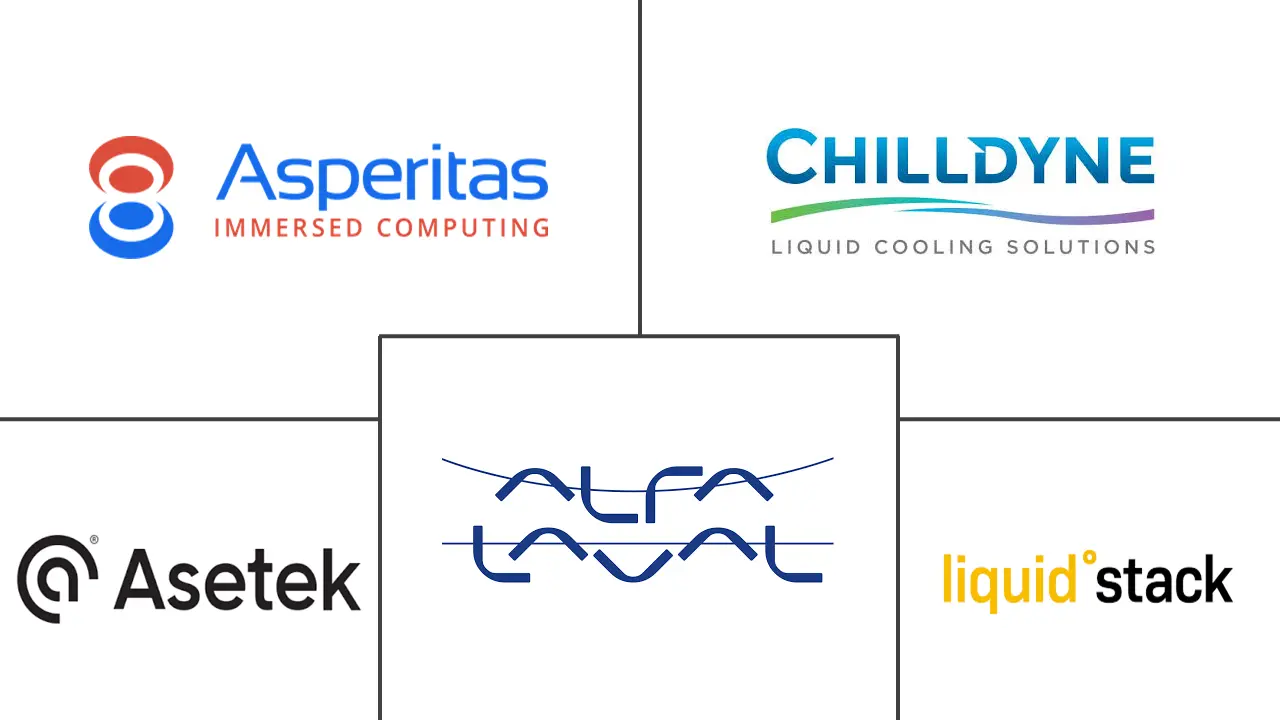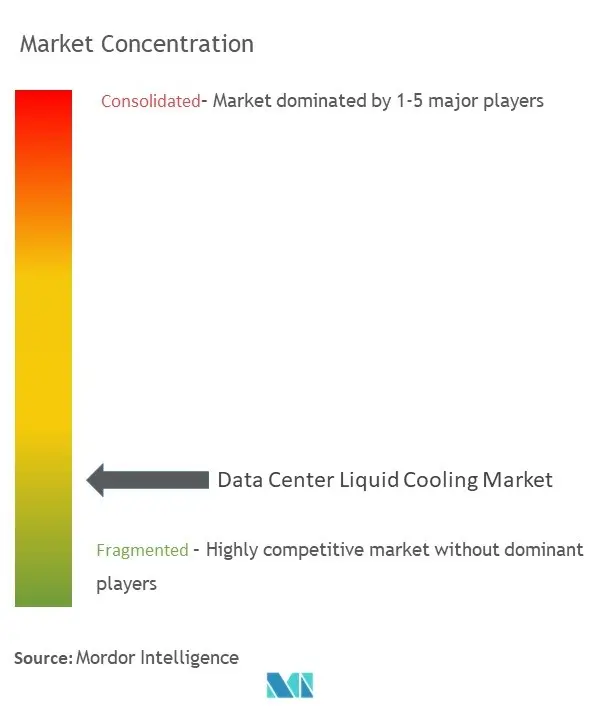Data Center Liquid CoolingTop Companies
-
Alfa Laval Corporate AB
-
LiquidStack Inc.
-
Asetek Inc. A/S
-
Asperitas
-
Chilldyne Inc.
*Disclaimer: Top companies sorted in no particular order

Data Center Liquid CoolingMarket Concentration

Data Center Liquid CoolingCompany List
-
Alfa Laval Corporate AB
-
LiquidStack Inc.
-
Asetek Inc. A/S
-
Asperitas
-
Chilldyne Inc.
-
CoolIT Systems Inc.
-
Fujitsu Ltd.
-
Mikros Technologies
-
Kaori Heat Treatment Co. Ltd
-
Lenovo Group Limited
-
LiquidCool Solutions Inc.
-
Midas Green Technologies
-
Iceotope Technologies Ltd
-
USystems Ltd (Legrand Group)
-
Rittal GmbH & Co. KG
-
Schneider Electric
-
Submer Technologies & Submer Inc.
-
Vertiv Group Corp.
-
Wakefield Thermal Solutions Inc.
-
Wiwynn Corporation
-
3M Company
-
Engineered Fluids Inc.
-
Green Revolution Cooling Inc.
-
Solvay SA
Specific to Data Center Liquid Cooling Market

